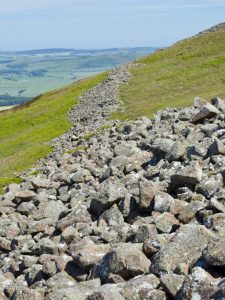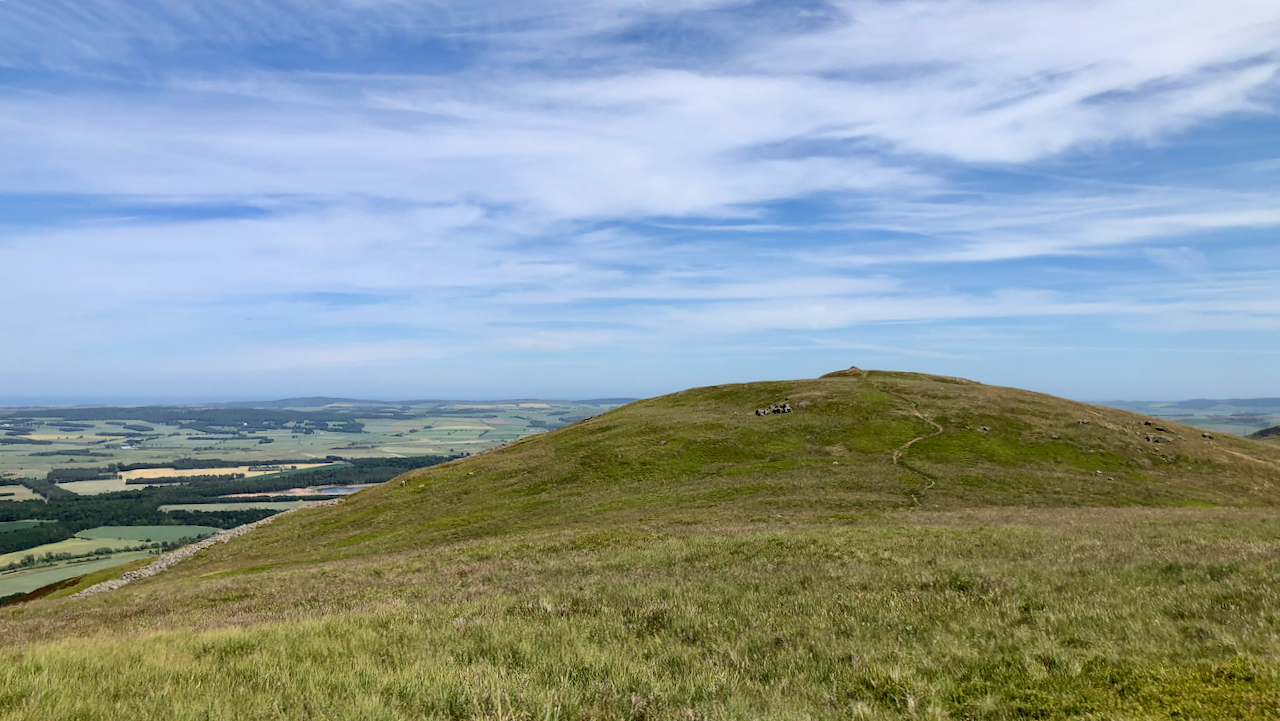
I must admit I was a bit disappointed. The largest Iron Age Fort in Northumberland, occupying 12 acres of a twin topped, 361m.
The most interesting are the remains of the perimeter stone rampart. Within it, archaeologists believe there were 100 timber-built roundhouses or other buildings and an inner fort excavated out of the rock1Northumberland National Park. (2021). Yeavering Bell • Northumberland National Park. [online] Available at: https://www.northumberlandnationalpark.org.uk/places-to-visit/the-cheviots/yeavering-bell/ [Accessed 20 Jun. 2022].. The views from the summit are superb, but not many humps and bumps to see.
This northern edge of the Cheviots is an area rich in history. Almost every hill has some sort of fort on it, and Yeavering Bell, an ‘Holy Mountain’ directly overlooks an overlooks an important Saxon site at Ad Gefin — Old Yeavering — thought to be the principle palace of the Bernician Kings2Adams, Max. “The King of the North”. Page 15. 2020. Head of Zeus..
Just a stone’s throw to the east, in 1402, at the Battle of Homildon Hill, Harry Hotspur, the eldest son of Henry Percy, the 1st Earl of Northumberland, routed a marauding Scottish army, capturing several Scottish nobles for ransom.
And a century later, in 1513, closer to the Scottish Border, the Scots suffered a terrible defeat by the English at Flodden Field.
- 1Northumberland National Park. (2021). Yeavering Bell • Northumberland National Park. [online] Available at: https://www.northumberlandnationalpark.org.uk/places-to-visit/the-cheviots/yeavering-bell/ [Accessed 20 Jun. 2022].
- 2Adams, Max. “The King of the North”. Page 15. 2020. Head of Zeus.

Leave a Reply